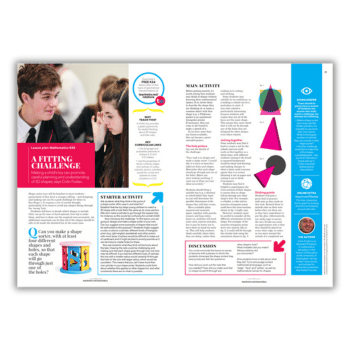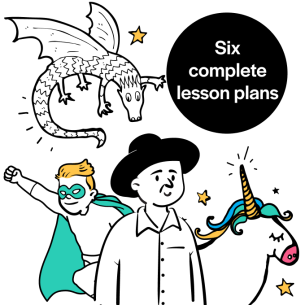Making a child’s toy can promote careful planning and understanding of 3D shapes in KS3 maths lessons…
Shape sorter toys will be familiar to most students – particularly if they have a younger sibling. Designing and making one can be a good challenge for those in Key Stage 3. It requires a lot of careful thought, particularly if we want to avoid any shapes fitting through the ‘wrong’ hole.
Students will have to decide which shapes to include (they can go for easy or hard options). How big should they make them? How can they draw out the required nets accurately?
An additional constraint can be that all of the shapes should be able to fit inside the finished box at the same time.
3D shapes KS3 learning objectives
- Use language and properties precisely to analyse 2D and 3D shapes
- Use the properties of faces, surfaces, edges and vertices of cubes, cuboids, prisms, cylinders, pyramids, cones and spheres to solve problems in 3D
Starter activity
Ask students what they think is the point of a shape sorter. Who uses it, and what for? Establish that the toy helps young children to match a 3D shape with a hole that’s the same as its cross-section.
(We don’t want a cylinder to go through the square hole, for instance. That would be confusing for a small child!)
Now introduce the challenge: “In this lesson, you are going to design and make a shape sorter of your own. Can you suggest some examples of shapes that would be well suited to this purpose?”
Students might suggest a cube, a cuboid, a cylinder, different kinds of triangular prism (e.g. right-angled, equilateral), and other prisms with more faces.
A sphere would be difficult to make out of cardboard. It might be best to avoid pyramids as it can be tricky to create holes for these.
Now ask students what they think will be tricky about the task. Drawing the nets could be challenging, and making sure that each shape goes through only one hole may be difficult.
If you had two different sizes of cylinder, the one with a smaller radius would certainly fit through the hole for the one with larger radius, which would be a problem.
This means that you can’t have more than one cylinder in your shape sorter. Students could think about whether this applies to other shapes too, and what constraints there are on what is possible.
Colin Foster is an assistant professor in mathematics education in the School of Education at the University of Nottingham. He has written many books and articles for mathematics teachers. Browse more KS3 maths games and lesson ideas.














